I remember the first time I visited GoFundMe.com. I had heard of it before, but I never bothered to actually check it because I didn’t really care.
I was watching this video when I noticed the uploader had annotated the video to ask people to donate to his GoFundMe. What an absolutely fabulous way to advertise. You know, upload music that wasn’t composed, recorded or produced by you and then ask people to donate to you with an annotation. Because that makes sense, right?
In the GoFundMe campaign, the author even had the nerve to post this:
The thing about my YouTube channel is that a majority of the uploads aren’t original works. Because of that, I don’t have the power to assign advertising (monetize) them
You mean you can’t make money out of other people’s work? Wow, I am shocked! You poor man! You went through all the trouble of, well, pirating music, adding four screenshots that you probably also stole and uploading it to Youtube for nothing! 66,000,000+ views and now you complain about not making money!
But his campaign gets even funnier:
If this takes off and I reach the $175.00 faster than I expected I’ll raise the limit so I can have more to use.
Wow, that’s one way to write “Give me money, you ***holes!” The more, the better huh? Milk the cow all the way through! Right before that, he wrote this:
I’ll respond with hopefully better music and higher quality uploads
This $175 is really going to make a difference. I’m sure that, with it, you will be able to afford a full production studio.
That’s one way to present things, Evan Bennet. Money you donate to me isn’t really going to me, it’s going to my channel… That’s like saying, “Money you spend buying a burger at McDonald’s doesn’t go to the business owner, it goes to the store and helps improve the store.”
In any event, Evan Bennet’s campaign opened the way to an entire new website that I had so far not had the misfortune to investigate. I admit the concept warmed my heart at first. All those people in all those awful, unfair and terrible situations, desperately asking for money to pay for treatment, physical therapy or to avoid foreclosure. All those people in shitty situations that just wants a little bit of help, most likely deservedly so. Take this one for example:
This is probably every parent’s nightmare and a terrible tragedy. Nothings makes you feel better and nothing makes you appreciate your health more than spending a few minutes reading all those depressing and horrible stories that happen to people all the time. You know, there are so many terrible illnesses on this planet that fall upon so many nice and kind people, and that’s not even counting accidents. Humans are an empathetic species and if we can help each other in time of need, we definitely should.
That being said, my problem is not with people raising money, but with GoFundMe. GoFundMe is not the only website to use the concept of crowdfunding (kickstarter, indiegogo, teespring, patreon, etc.), but it’s the only one to really use that aspect of trying to play on people’s emotions to try to capitalize on an otherwise horrific event. Let me explain clearly: say you are interest in the next game from the creators of Banjo-Kazooie. You go to their kickstarter, you pay 10 pounds and voilà, you just contributed to the game development as well as pre-ordered the game. In a way, it’s a bit like a store or rather a pre-release purchase. There’s a chance the project will fail and that you will lose your money, sure, but that’s a topic for another day.
But with GoFundMe, you are basically throwing money away hoping that it will actually achieve something. There is no guarantee whatsoever that your donation will achieve anything or even that it will be spent as advertizedd; it’s a money-raising business that masquerades as a charity. In other words, you feel you are helping people overcome some terrible and difficult situations, but you are actually lining the pockets of a prosperous and well-thought out business with no guarantees that your money will ever be used for the intended purposes.
GoFundMe’s funders are pretty smart: they understood that people were tired to donate to big charities and never hear about their money and what was achieved with it ever again. If you donate $100 to the Red Cross, do you have any idea where your money goes? Well, the Red Cross says it’s going to this place and this place, but you feel your little $100 donation has very little impact when campaigns raise millions and millions. What’s $100 in an ocean of money? Does it really make a difference? With GoFundMe, however, you can have the impression that you are helping someone in need directly. It’s a bit like giving money to panhandlers, but with a sad, sob story behind it.
My biggest problem with GoFundMe
The biggest problem I have with GoFundMe are the crazy fees it charges and how disguised those fees are.
Look at this: it looks so official. Like you are signing a big check. The image on the right even serves to reinforces what a strong cause you are supporting. Right at the top, you have a big “Enter your donation” like you would have for any charity in the United States. It looks so official and nice; don’t you feel nice supporting such a worthy cause?
Just at the bottom - in what web marketers call “beneath the fold” because you cannot see it because you have to scroll down to see it, you have this:
Terms? What terms? I never heard no terms! You don’t even have to check a checkbox, it’s just assumed that you automatically agree to all of them. Hell, this doesn’t even look like anything clickable! By continuing, you accept! Accept what? Let’s see:
- GoFundMe charges a flat fee of 5% on all payments collected.
- In addition to GoFundMe’s 5% fee, users are also agreeing to one of the following fees: US Users ONLY: WePay charges a fee of 2.9% AND $0.30 per donation
Oh. Oh, those terms! So out of a $5 donation, $0.25 directly goes to GoFundMe and $0.45 goes to WePay. So if you have a $500 campaign and 100 people donate $5, you don’t really receive $500, you receive $430. Well… That’s one way to say to present things, I suppose.Is there any way to make it more confusing? Well, yeah. If we look back at the Vivaldi guy’s campaign:
I don’t understand. Where’s the fee? People donated $25 to him (lol) and the counter says “$25.” Shouldn’t it say $21.83, which is what the person really received after fees were removed? No, of course not. Misleading. Misleading as hell. If you need to raise $1,000 for an event, you have to start a campaign with a $1,100 goal or something like that.
And just look at that:
I’m donating, but it’s not a donation? Generally considered to be personal gifts? Is it a personal gift or a donation? Make up your mind already. It’s… It’s so misleading. “Donation,” in the popular vocabulary, has a very narrow definition: “something that is given to a charity, especially a sum of money.” When you have a big “Enter your donation” with an arrow to make sure you don’t miss where you have to enter your amount, it’s at the very least very shady.
And, of course, you can’t deduce your “donation/personal gift” from your taxes.
GoFundMe is a business. Period.
My main issue stems from the fact GoFundMe charges a fortune to do very little. Let’s look at the emergencies page for instance:
If you look carefully, you can see that it stops at page 50. There is no page 51. Well, there is one, but you can’t click on it. You know it must exists, because the results say “491-500 of thousands,” so there must be a page 80, 90 and probably 150, 200, etc. Don’t try to edit the URL to look at it because it’s not there.
If you also look more carefully at every project listed, you will see all of them already have quite a bit of money “raised.” Even on page 50, we see a $15k project with already $2,445 raised. So how come every projects on the first 50 pages already have a lot donated? How can people donate if they cannot find your page? Well, because you have to do the first steps yourself, of course! You have to get the first 10, 20% of your objective “in” so that GoFundMe will even consider listing you on the first 50 pages of search results.
In other words, GoFundMe expects you to do the first - and the hardest - part of the job to give you a shot at getting more donations. It looks at whether your projects stands any chance to receive donations from strangers before allowing you the priviledge to be actually listed on its website! Crazy! And of course, out of the money that is originally raised without any guarantee whatsoever that you will get any more exposure to your project, GoFundMe takes its cut. Out of the $2,445 project above, the website has already taken a $122.50 cut, and that’s just page 50. Every page literally prints money for the website.
All this to say that it’s all up to you to get the party started: harass your friends on Facebook, Twitter, Linkedin, wherever you got them. Get an article written about your fundraiser or, even better, end up on TV, during live news. All this to give, you get it, even more exposure to GoFundMe. Because you have to link people to your GoFundMe page so they can donate after all.
In other words, you have to do the publicity for the website yourself. As if that isn’t good enough, take a look at that:
What do we see in position two? Yep, an ad for GoFundMe. And how do you think the ad is paid? With people donating for projects, of course. Every time you “pledge” money in a GoFundMe campaign, you are paying for GoFundMe’s ads so that it can lure more visitors, get more funding and spend more on ad, et cetera. You are directly financing GoFundMe’s growth. There’s nothing wrong with advertising, but this is something you would expect out of a business, of course - not a website whose main mission seems to be to raise money for worthy causes.
Getting to the pith of the problem
Except for the rare listing from a registered charity, GoFundMe is not a charity and you are not “donating” to a cause. You are making a gift to someone. This should raise massive red flags right around your eyes.
Take GoFundMe’s special category, “Nepal.” Because these guys can capitalize on everything:
1-10 of thousands. Thousands. I know the earthquake in Nepal is absolutely terrible, but even if you spent just a minute looking at every single one of them, you would have at best days of work. It seems that every single little thing that is related to Nepal is somehow ending up as a GoFundMe campaign. And why not after all? It costs nothing to begin a campaign, so why not take a chance that will actually work and that you will make money?
Speaking of that one particular project I linked, which was the most popular at the time of writing this post… Let’s say you are an individual wanting to help Nepalese after the terrible tragedy that occured. What makes you sure that one project in particular is the best place to spend your money? Why would you donate your money there? This leads to another, perhaps more important question. Out of the $164,281 donated so far, how much of that money will really end up helping Nepalese people? How much of it will be taken in salaries, transit fees, transportation, accomodation, bonuses and more?
You don’t know and you don’t have any way to know because you are not donating to a registered charity that is closely monitored by authorities, you are donating to Joanna Donovan who will do god-knows-what with the money. There is zero accountability here and anyone could easily lie and make everything up. Take this for example:
On Wednesday morning our latest consignment of 3,000 survival kits and 300 tarpaulins were all packed and ready to leave for Bhorle VDC in Rasuwa District – but, regretfully, they didn’t get out that day. Given that we are availing transportation from WFP (the UN World Food Program) to reduce our costs, they said they can only send our 3,000 ‘’dignity packs’ this Saturday, May 30th.
What proof do we have of that? What evidence do we have that it did happen that way? I’m not saying it didn’t happen, I’m saying that we have no evidence, no receipt, no witness, no bill, no employees on the field and nothing confirming it. These 3,000 survival kit might never have been ordered for all we know.
Look at this little gem, for instance:
This GoFundMe was created by Joanna Donovan in Madison, WI. I resided in Kathmandu, Nepal for many years and currently own and operate a fairtrade business highlighting the amazing silversmiths of the Kathmandu Valley.
So we are donating to a lady in Wisconsin, no less, with the hopes that she will donate the funds in a way or another to another guy, with the hopes that he will end up donating to earthquake victims. That’s quite a stretch, and that’s the most popular Nepal campaign on the website, so I dare not check the rest.
Look at this little extract for instance:
Another news is that in response to the despair of being stripped of their home, Joshua and Norbu, in collaboration with Tharu friends and some young, talented architects, have designed a locally-produced, affordable house. We will build some prototypes in the village and send you these designs in a future update.
This is just laughable. Do these people seriously expect me to believe that two guys and some “talented” architects have somehow managed, in the midst of one of the biggest catastrophic event of our generation, to actually design a “locally-produced” house? What for? Is that really where this group’s priorities are? Oh, oh, they will build some prototypes in the village… With the whole lot $200,000 they are asking for? This is the group’s priority right now? This is just beyond belief. This is clearly something that will lead absolutely nowhere because, believe me, you are far from the first person to have that idea. And by the way, unless you count the tiny fraction of houses are built and shipped (a reluctantly stupid idea) all houses are locally-produced by definition.
At the end, we finally hear the true questions:
“Hope” is not a good strategy when we are talking about $200,000 that was donated on a whim to a group that may or may not help Nepalese. I’d love to see those people’s salaries and the cut they take but, you know, with GoFundMe, you have no accountability and no transparency. There are thousands of such projects on the website and I fail to see what makes this one so special apart from a very distant and improbable housing project by a lady in Wisconsin. And to make the whole deal even better with that campaign, your donation isn’t even tax-deductible. Wonderful!
No offense meant to Joanna Donovan nor Shakun or Keith, by the way. I don’t know anything about you and for all I know, you may be fantastic human beings who truly want to help out others, but there is no way for me to know in the middle of the ocean of bogus, unreliable and shady GoFundMe projects.
Then, GoFundMe has the nerve to post this:
This is where I lost the little bit of sympathy I still had for GoFundMe. This is wrong on so many levels I don’t even know where to begin, so I’ll go step by step.
First, you are comparing 5% - as in, 5% of gross donations you receive - to a charity’s operating costs. Both have nothing to do with each other. They’re totally unrelated. In other words, if you receive $100 in donations, you will take $5, you will be charged $3 as a payment processor and you will hand $92 to the person. Ultimately, this doesn’t mean that $92 of the $100 you donated ends up helping the person, it simply means that $92 out of the $100 donated end up in the person’s hands.
So… why not donate to that person directly? Why go through an intermediary that charges a little fortune? Instead of donating to a project where money may or may not end up helping people, why not donate to a charity that manages your funds for you and make sure your donation are well-spent?
Second, there’s a difference between running a website (which is basically what GoFundMe is) and running a massive worldwide organization that operates in pretty much every country on Earth. To compare a simple fundraising website to the Red Cross is simply chimerical.
Third, why would you choose these three charities in particular? What made you choose these ones in particular? How about a more unbiased study instead? And why are you comparing a for-profit business with non-profits anyway?
Fourth, the 5% you charge and the 3% fees charged by the credit card company have nothing to do with your operating expenses. Your operating expenses, which would be interesting to read given the chance, would be your salaries, cost of web hosting, etc. If you meant to discuss the operating cost of the recipient of the donations, it would still make no sense because a portion of the final donation will end up being an operating cost. It’s simply not true that money donated to GoFundMe helps more than money donated to the Red Cross or the Wounded Warrior Project.
Fifth, donations to Red Cross and others are of course tax deductible. If you donate $1,000 to the Red Cross, you will pay less taxes at the end of the year. Almost every “donation” on your website is not deductible.
And, lastly, GOFUNDME IS NOT A CHARITY! Even if the comparison of operating costs was valid (between a wild spectrum of charities serving very different interests, no less), why do you think comparing a for profit company to charities would make any sense? That’s like saying Google has an operating expense of $12.8B out of $17.3B in revenue, or roughly 74%, more than nine times of GoFundMe (again, this makes no sense).
You are comparing apple to oranges here. It would almost make more sense to compare GoFundMe to LendingClub and at least LendingClub exposes what it is clearly and in detail.
GoFundMe: when’s the IPO?
At this point, let’s face this website for what it is: a cheap attempt to capitalize on people’s sentiments. GoFundMe says it has raised over $1.1B so far, which amounts to around $1M per month with their 5% cut. With the exponential growth they’ve had, it is safe to estimate GoFundMe generates well over two million dollars in revenue per month and with minimal expenses (a website and a handful of employees (41, to be exact), most of them being “customer happiness.” Clever. At least they admit you are a customer and not a “donator,” I guess), I can only see it for what it is: a tremendously profitable business. It wouldn’t shock me at all to see both owners raking over $500,000 per year in salary. If we do a quick math with $25M in revenue per year:
- 41 employees times $60,000 average salary (very generous salary for a “customer happiness), ignoring the two founders.
- Let’s assume Salary is 33% of the operating income, which is quite generous.
- Total operating cost: $7.5M
- Let’s triple that amount to account to account for interest, taxes, depreciation, accounting filing fees, etc. Again, this is extremely generous and the real costs are without a doubt much lower.
- Total profit: ($25M-$22M) / 2 founders = $750,000 each
- Not bad for a business built by your users where you basically have nothing to do.
If GoFundMe was straight and honest with all of its practices, I would have zero problems with it. Hell, it’s not even the first company to attempt to do just that, but it’s the first to really do it on such a global, epic scale. GoFundMe simply doesn’t deserve to take the same percentage as, let’s say, Kickstarter. Not if it wants to position itself as a website that helps people helping others. It’s a massive cash cow position in a gray legal area (people believe they are supporting charity- you are, after all, “donating”) that exploits people’s compassion towards others to make a little fortune.
GoFundMe should stop trying to pretend it’s anything but a massive cash cow. Remove the “donation,” expose the fees you charge more clearly and post the amount that was paid in fees so far in the campaign. If a project has raised $10,000 for example, write that the owner will only receive $9,100 or so. Write that there is no guarantee at all that the money will be used for the purposes listed on a project and that you do not do any check to see whether the money was spent like it was said it would (see: donorschoose, a FAR better website as well as a non-profit). Give a chance to new projects (a bit like Kickstarter does with its recent listings page) and stop trying to pretend you are anything but a business out to make as much money. If you did all that, I would have absolutely zero problems with you, but until then, you are nothing but a crooked website that manipulates and coax people into making you rich.


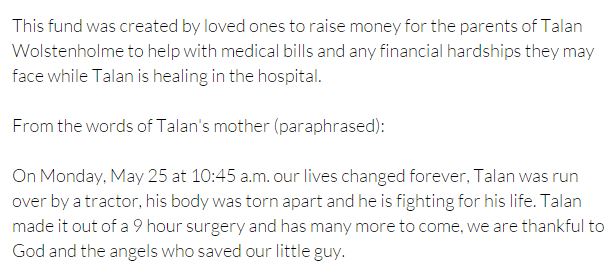
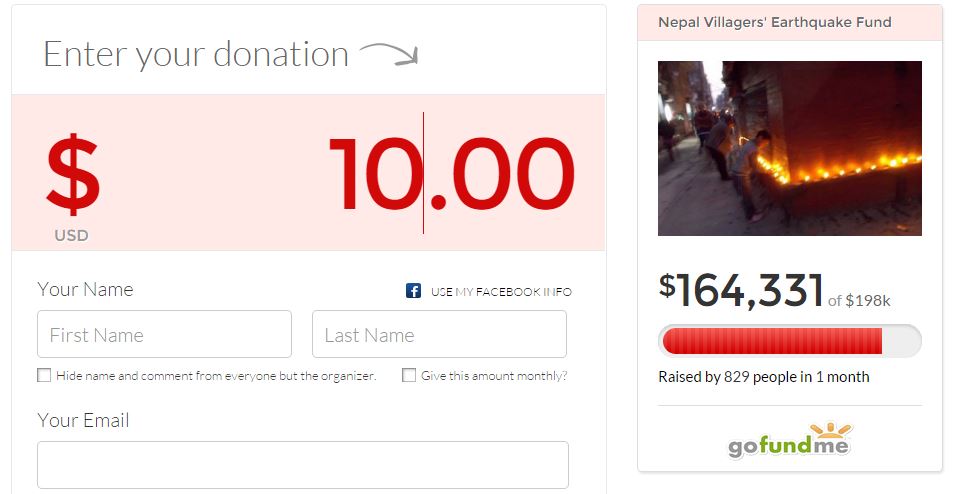
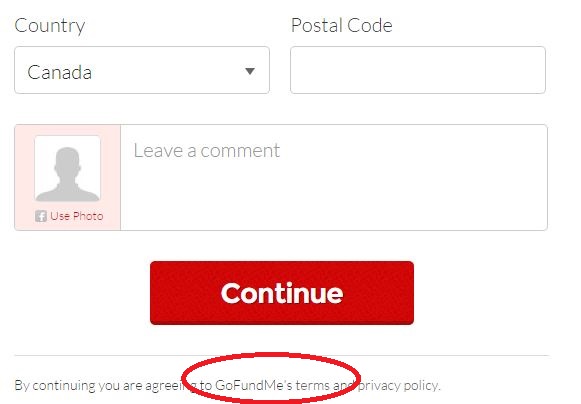
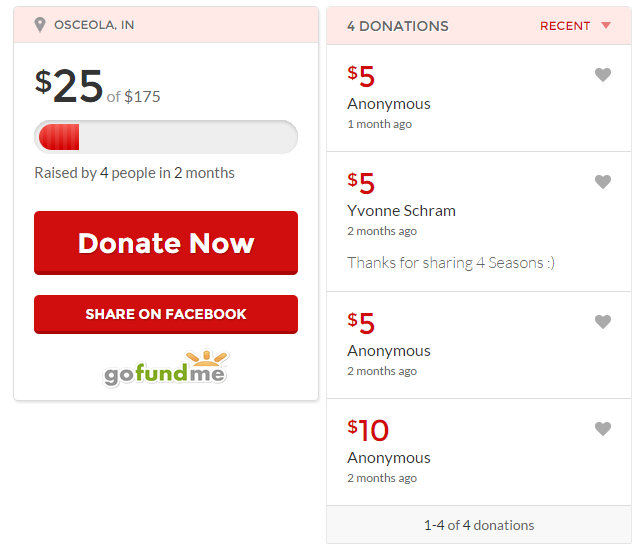

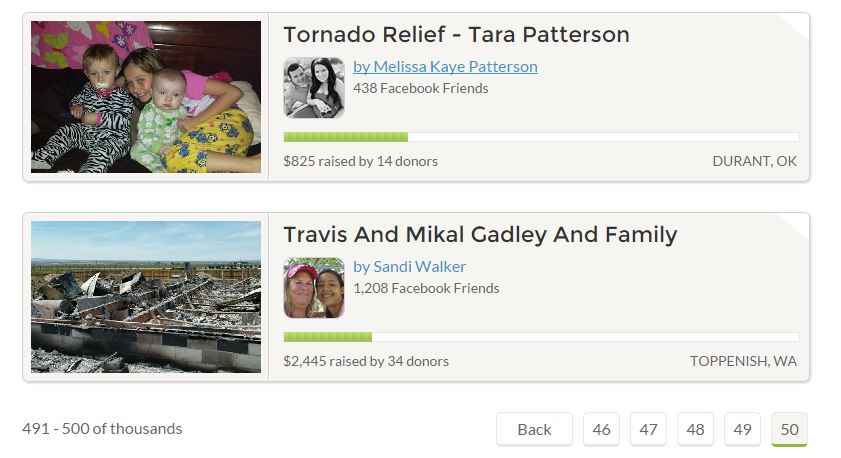
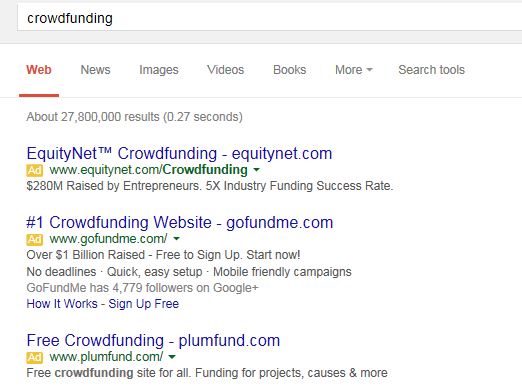
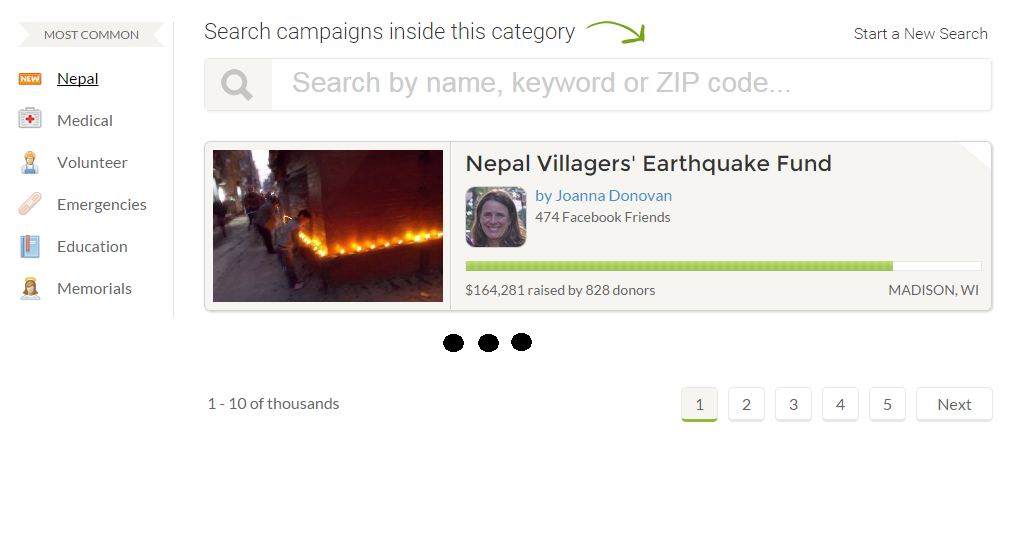

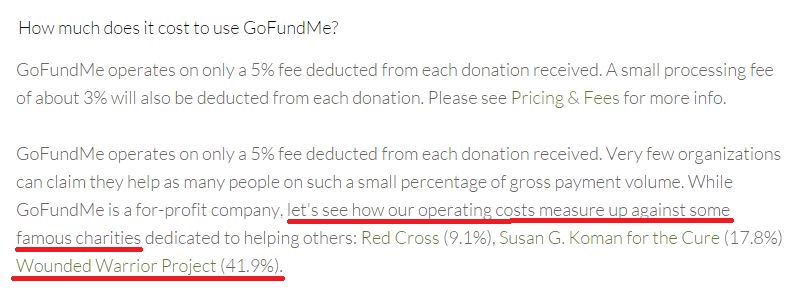
Do you have any idea how much money it costs to run a charity site? A LOT. Do you understand that sadly they have to HIRE people because it takes an entire team of dedicated workers AT least 40 hour weeks to maintain the site? I tried to run a charity site and not one person on earth was able to give 40 hours a week and be able to even feed themselves. This stuff is HARD and EXPENSIVE. GoFundMe probably spends at least 5000$ a month in advertising alone, which is helping every campaign. I spent the last month doing 70 hour plus weeks to set mine up which is non-profit and spent every last penny I had to set it up. Noone wants so much as to move their finger to hit like or share to help out. This whole last month I never had more than one candy bar a day, on top of that I’m a disabled full time college student that makes about 1000$ a month and I still need to pay rent, utilities, etc. Not one person donated. I don’t know what to even do at this point.